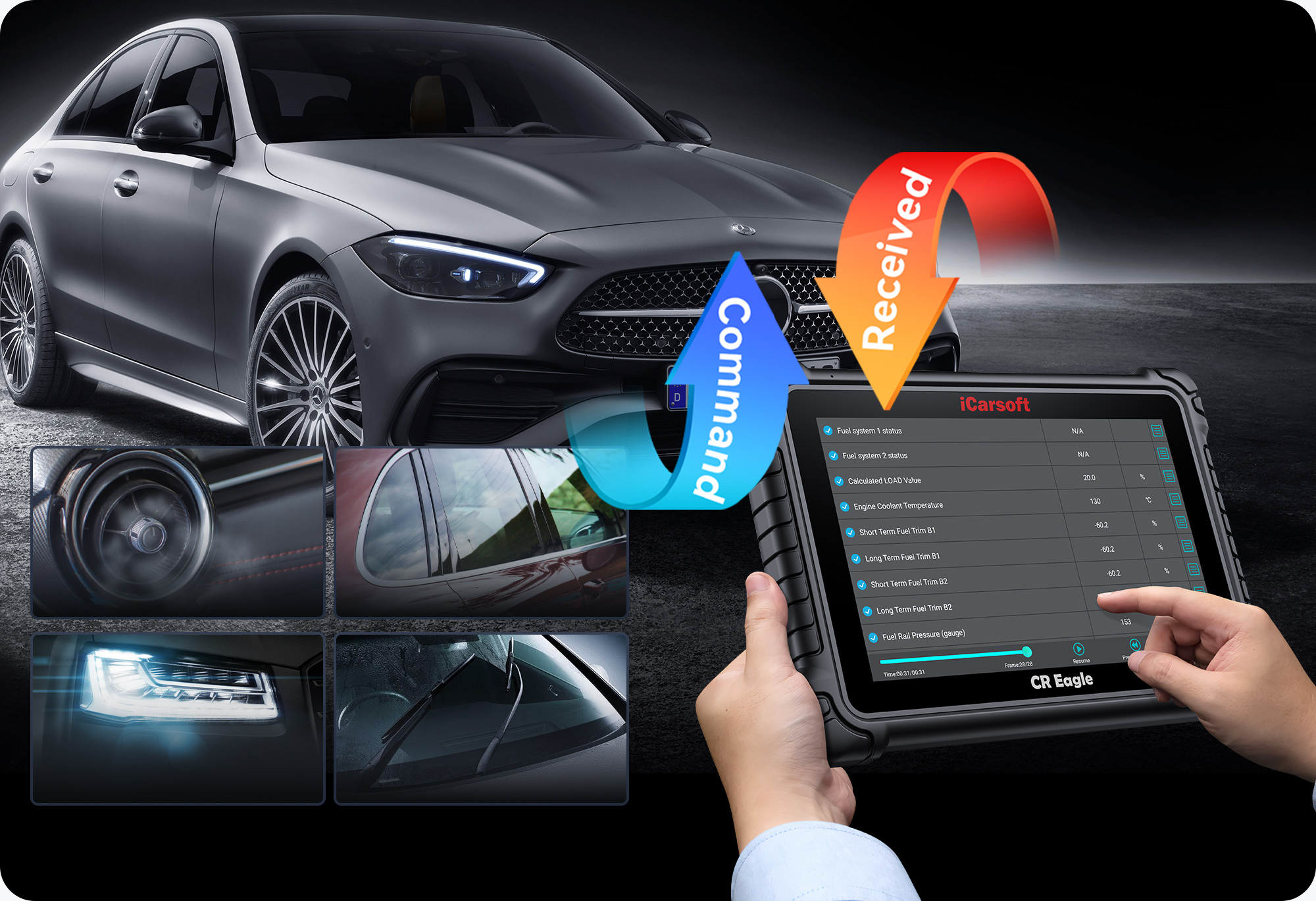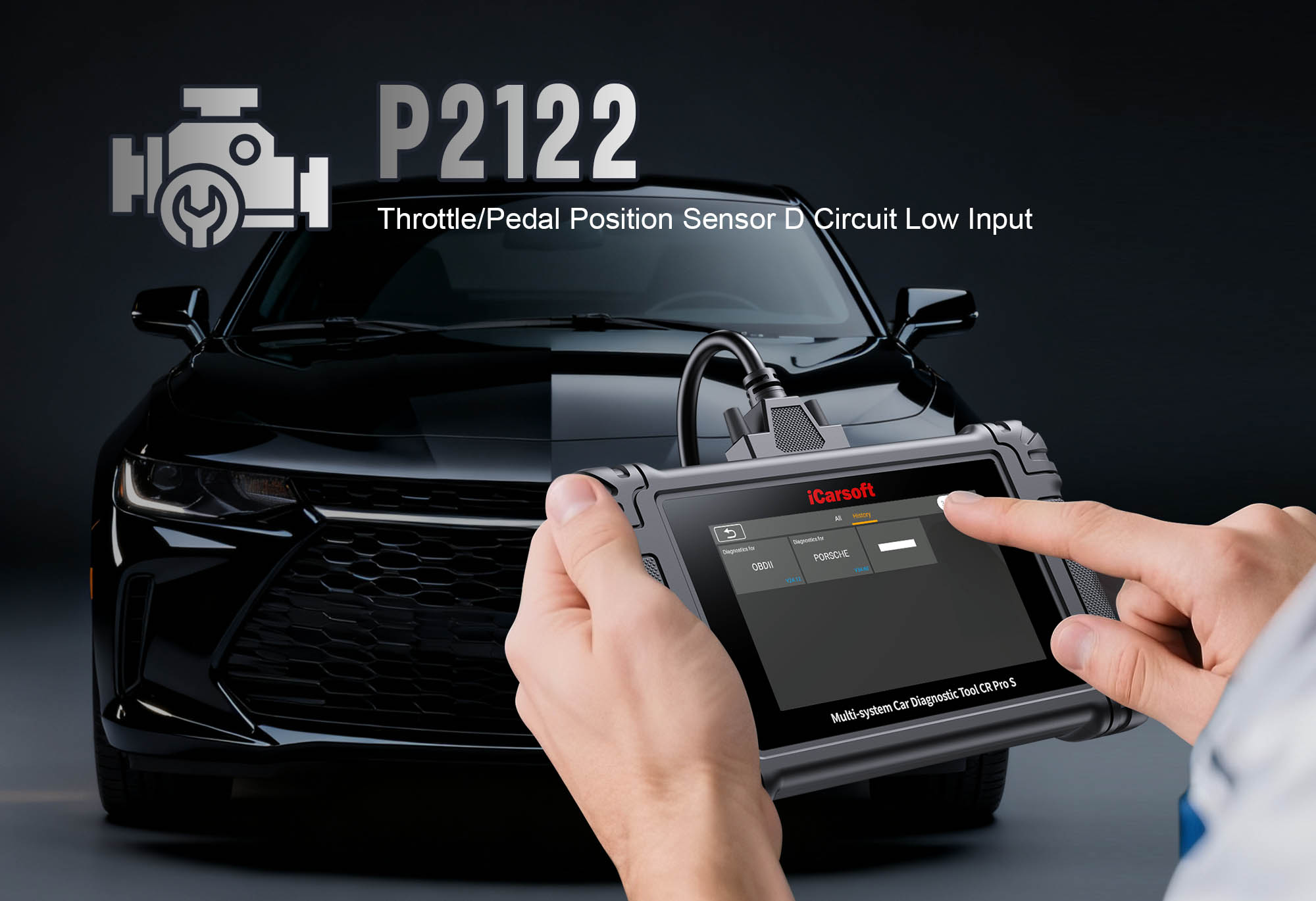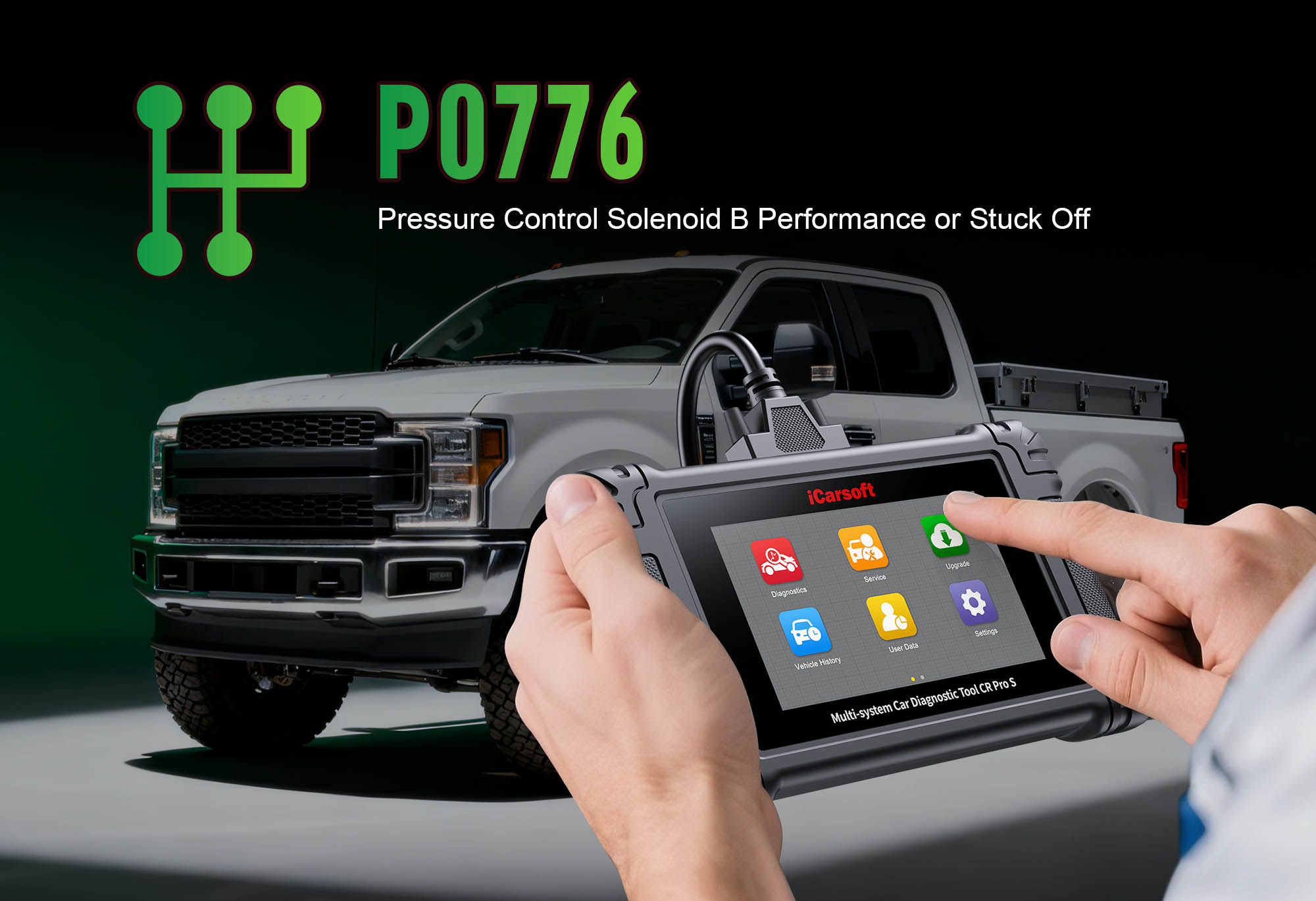When your vehicle’s check engine light illuminates and a diagnostic scan pulls up P0562—"System Voltage Low"—it’s a clear warning: your vehicle’s electrical system isn’t supplying enough voltage to power critical components. The Engine Control Module (ECM) triggers this code when it detects battery/charging system voltage drops below the manufacturer’s threshold (typically 9–10V during operation), risking issues like dim lights, slow cranking, or even total electrical failure.
While low voltage might seem like a "simple battery problem," it can stem from faulty alternators, corroded connections, or parasitic drains—issues basic scanners struggle to isolate. The iCarsoft CR Eagle changes this: with its dedicated electrical system testing tools, it pinpoints the root cause of P0562 quickly, guides repairs, and ensures the code stays cleared. Let’s break down the process.
What You Need to Know About P0562
First, understand why P0562 matters and what causes it:
The Vehicle’s Electrical System
Your car relies on a 12V battery (stores power) and alternator (recharges the battery while the engine runs). The ECM monitors this system to ensure voltage stays within 13.5–14.5V during operation—P0562 triggers when it dips below 9–10V.
Key Symptoms
Dim Lights/Displays
Headlights, interior lights, or dashboard screens appear dimmer than usual.
Slow Engine Cranking
Engine takes longer to turn over when starting (worse in cold weather).
Malfunctioning Accessories
Power windows move slowly, radio cuts out, or AC works intermittently.
Intermittent Check Engine Light
Code comes and goes as voltage fluctuates during driving.
Severe Cases
Engine stalls while driving or fails to start entirely.
Common Causes
-
Weak/dead battery (can’t hold a charge—common in cold weather).
-
Faulty alternator (fails to recharge the battery during operation).
-
Corroded/loose battery terminals (blocks current flow between battery and system).
-
Parasitic drain (components draw power when the vehicle is off, draining the battery).
-
Damaged wiring (breaks or shorts in the charging system circuit).
-
Blown alternator fuse (cuts power to the alternator, stopping charging).
Why iCarsoft CR Eagle Excels at Diagnosing P0562
Basic scanners only tell you "voltage is low"—they can’t test alternator charging, identify drains, or check terminal health. The CR Eagle solves this with specialized electrical system features:
Real-Time Voltage Monitoring
Tracks battery/alternator voltage across conditions (off, idle, acceleration).
Alternator Performance Tests
Measures output under load to confirm if the alternator is charging properly.
Parasitic Drain Detection
Identifies components drawing excess power when the vehicle is off.
Battery Health Analysis
Tests capacity (not just voltage) to spot weak batteries that can’t hold a charge.
Terminal Resistance Checks
Detects corrosion or loose connections that block current flow.
Step-by-Step: Diagnose P0562 with iCarsoft CR Eagle
-
Connect the Tool & Confirm the Code
-
Plug the iCarsoft CR Eagle into your vehicle’s OBD-II port (under the dashboard) and power it on.
-
Select your vehicle’s make, model, and year (use AutoVIN for accuracy—critical for charging system specs).
-
Navigate to OBD-II > Read Codes to confirm P0562. Note related codes (e.g., P0563 for "system voltage high," P0620 for "alternator control circuit")—these narrow down the issue.
-
Tap Code Description to see vehicle-specific details (e.g., "Voltage <9.5V for 10 consecutive seconds" on a Toyota Corolla).
-
Monitor Battery & Alternator Voltage
First, confirm if voltage is low—and when it drops:
-
Go to Engine > Live Data > Electrical System on the CR Eagle. Select:
-
"Battery Voltage" (measures battery output).
-
"Alternator Output Voltage" (measures charging performance).
-
Test 1: Vehicle Off – Turn ignition to "On" (don’t start). Battery voltage should be 12.4–12.7V.
-
<12.4V: Battery is weak/discharged (proceed to Step 3).
-
Test 2: Engine Running (Idle) – Start the engine and idle. Alternator voltage should be 13.5–14.5V.
-
<13.5V: Alternator isn’t charging (proceed to Step 4).
-
Fluctuating Voltage: Loose/corroded terminals or damaged wiring (proceed to Step 5).
-
Test Battery Health
A low "vehicle off" voltage doesn’t always mean a dead battery—it could be a weak one that can’t hold a charge. The CR Eagle’s battery test confirms this:
-
Navigate to Special Functions > Electrical Tests > Battery Health Check.
-
Follow on-screen prompts: The tool measures battery capacity (Ah) and state of charge (%).
-
Interpret results:
-
Capacity <70% of rated value: Battery is worn out—needs replacement.
-
State of Charge <50%: Battery is discharged (charge it with a trickle charger first, then retest; if it discharges again, replace it).
-
Use the CR Eagle’s Battery Part Lookup to find the correct replacement (matches your vehicle’s CCA—cold cranking amps—specs).
-
Test Alternator Performance
If the alternator isn’t charging, it’s a top P0562 cause. The CR Eagle tests output under real-world load:
-
Go to Special Functions > Electrical Tests > Alternator Output Test.
-
Follow prompts: Turn on all accessories (headlights, AC, radio, rear defroster) to create a load.
-
The CR Eagle measures alternator output:
-
Normal: 13.5–14.5V (even with accessories on).
-
<13.5V: Alternator is faulty (replace it—first check for blown fuses using the CR Eagle’s Fuse Location Guide).
-
No output: Alternator fuse is blown or wiring is broken (trace wires with the tool’s Continuity Test).
-
Check for Corrosion & Parasitic Drains
If battery/alternator tests pass, P0562 likely stems from poor connections or hidden drains:
-
Terminal Inspection (Resistance Test):
-
Disconnect battery terminals. Clean corrosion with a wire brush (if present).
-
Set the CR Eagle to Resistance Test—connect probes to the terminal and battery post. Resistance should be <0.5 ohms.
-
>0.5 ohms: Corroded/loose terminals—tighten and apply dielectric grease to prevent future issues.
-
Parasitic Drain Test:
-
Turn off the vehicle and all accessories; close doors (to avoid interior light drains).
-
Navigate to Special Functions > Electrical Tests > Parasitic Drain Test.
-
Tool measures current draw (normal: <50mA).
-
>50mA: A component is drawing excess power (e.g., faulty door switch, stuck relay). The CR Eagle guides you to disconnect fuses one by one until the draw drops—isolating the faulty part.
Clear P0562 & Verify Repairs
Once you’ve fixed the root cause (e.g., replaced the battery, repaired the alternator), use the CR Eagle to clear the code and confirm the fix:
-
Reconnect all components (battery terminals, fuses, wiring).
-
Clear the Code: Navigate to Clear Codes and select P0562. Confirm deletion.
-
Verify Repairs:
-
Turn ignition to "On" (vehicle off) – Check battery voltage (12.4–12.7V).
-
Start the engine – Monitor alternator voltage (13.5–14.5V) for 10 minutes.
-
Take a 30-mile test drive – Use the CR Eagle’s Live Data Logging to record voltage (ensures no drops during driving).
-
Re-scan after the drive – No P0562 means the fix is successful.
How to Prevent P0562 from Recurring
-
Check Battery Terminals Monthly: Clean corrosion and tighten connections to avoid voltage drops.
-
Test Battery Twice a Year: Use the CR Eagle’s battery test before winter (cold weakens batteries) and summer (heat shortens life).
-
Avoid Parasitic Drains: Turn off all accessories when the vehicle is off—use the drain test if you notice frequent dead batteries.
-
Replace Alternator on Schedule: Alternators last 100,000–150,000 miles—test output annually with the CR Eagle.
-
Charge Weak Batteries Promptly: Use a trickle charger for discharged batteries (don’t just jump-start—this strains the alternator).
Conclusion
P0562’s "system voltage low" label might seem straightforward, but it requires more than just jump-starting the battery. The iCarsoft CR Eagle turns guesswork into precision: it tests battery health, alternator output, and connections to fix the real issue—saving you from replacing good parts.
Whether you’re a DIYer dealing with a dimly lit dashboard or a technician troubleshooting intermittent voltage drops, the CR Eagle is your go-to tool for P0562. Don’t let low voltage leave you stranded—grab your tool and get your vehicle’s electrical system back to full power.





